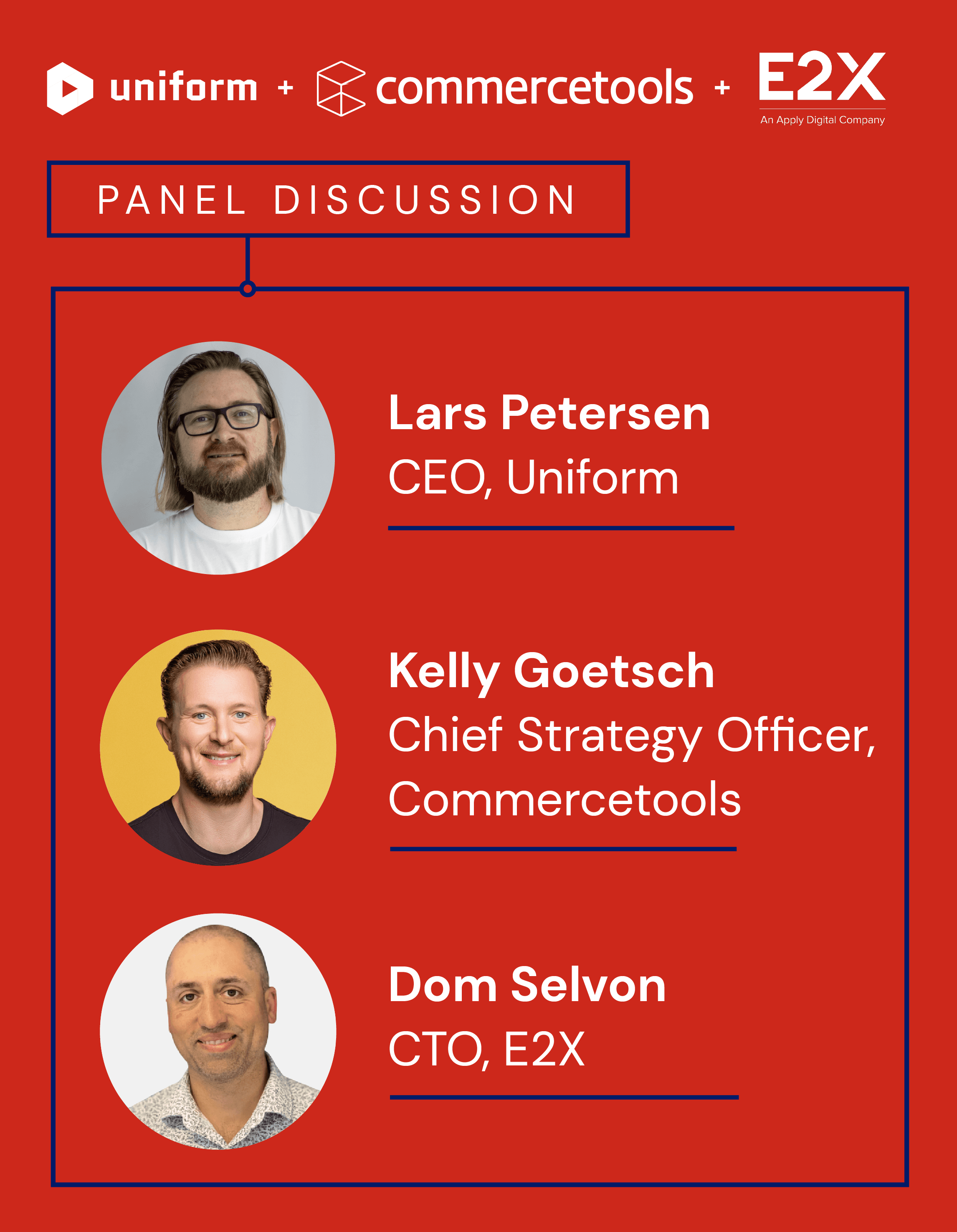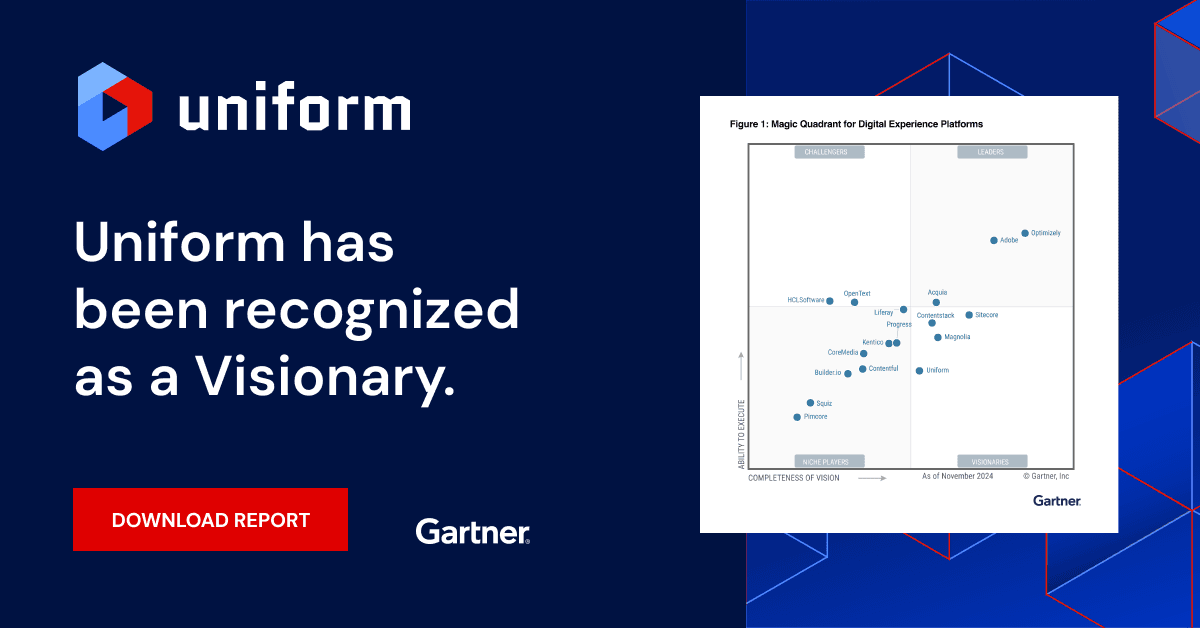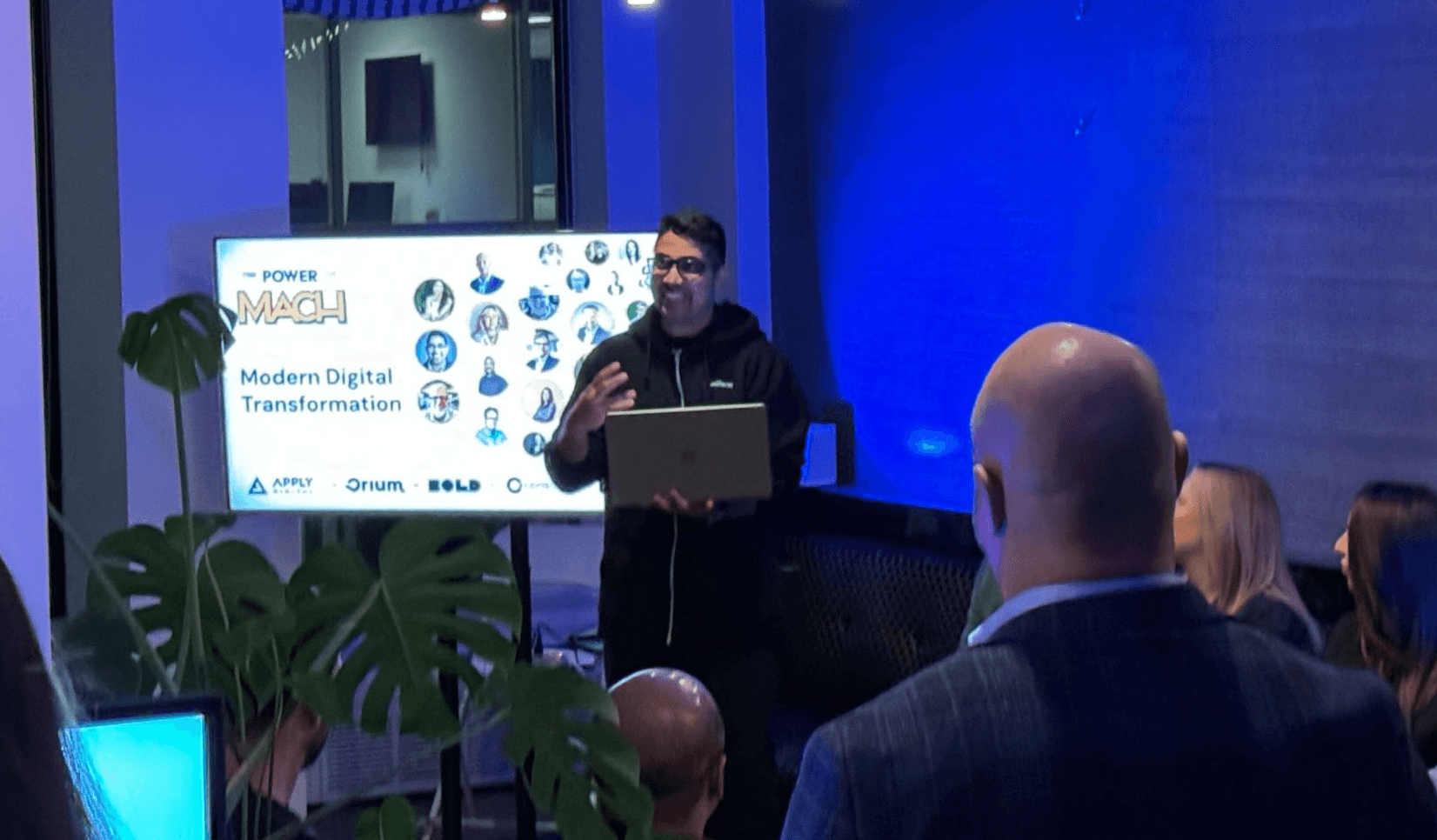Uniform blog/The power of composable architecture: DXP, DXCP, and headless
The power of composable architecture: DXP, DXCP, and headless
The power of composable architecture: DXP, DXCP, and headless
To meet the dire need for tools that help create and manage compelling digital experiences across channels, companies must build a stack that incorporates e-commerce, search, and other capabilities. Such a task involves navigating myriad vendors and approaches, from the digital experience platform (DXP) to digital experience composition platform (DXCP) to headless technologies.
Increasingly, with mainstream MACH (Microservices, APIs, Cloud, and Headless) adoption gaining traction, brands recognize the critical role of DXCP in creating engrossing experiences as well as affording greater agility and accelerating time to market. At our recent DXP vs. Digital experience composition vs. Headless webinar, Dom Selvon, CTO at E2X; Kelly Goetsch, CSO at commercetools and cofounder and chairman of the MACH Alliance; and I explored the DXP, DXCP, and headless arena, the growth of MACH, and the future of that exciting trend. Below is a recap.
Navigating DX and headless
As more brands adopt composable systems, MACH has accorded companies new techniques and technologies for building digital experiences. However, though many headless vendors claim to be MACH certified, some of them are not; and not all digital experience architectures are composable.
How to separate fads from facts? Become familiar with Goetsch’s and Selvon’s observations on headless, DXP, composable, and MACH:
- Selvon on headless: “Going headless means the functionality that runs the business can have any number of representations of that data and functionality. People often call it channel, multichannel, or omnichannel. I'm trying to urge people away from that sort of contest and encourage people to go channel-less. So, you don't think in terms of channel anymore; you think in terms of experience.”
- Goetsch on DXP: “Fundamentally, [DXP] is different from DXCP. DXP, it's top to bottom, everything in a box. Whereas, DXCP, I don’t know if you’d call it headless itself, but it's more of the neck as opposed to the head and neck of headless commerce. Again, different use cases, different approaches philosophically. But they're trying to help customers solve the same problem.”
- Selvon on composable: “Categorizing capabilities using the various terms of autonomy, modularity, discoverability, and the ability to partake in an orchestration and a context is a very good abstraction of what a composable domain service or capability would look like. If your software exhibits those features, then it's by definition composable.”
- Goetsch on MACH: “MACH stands for microservices, API-first. That means building the API, documentation, [and] specification, and then writing code. The ‘C’ is cloud-native multitenant SaaS, and that means you're consuming a service, not something that’s hosted on your behalf. And ‘H’ is headless, which is decoupling the front end from the back end.”
Composable architecture is transformative and offers clear advantages over traditional ones. “I’m a really big fan of this new DXCP approach [Uniform] is pioneering. It makes it much easier to adopt MACH and MACH Alliance members,” said Goetsch. He admitted, however, that while the benefits of going composable and MACH are clear, it can be a heavy lift for smaller enterprises.
“I’m a really big fan of this new DXCP approach [Uniform] is pioneering. It makes it much easier to adopt MACH and MACH Alliance members.”— Kelly Goetsch, CSO at commercetools and cofounder and chairman of the MACH Alliance
Managing experiences through composable
Applying old patterns to new technologies creates problems, not a composable solution. Since integrating composable and headless tools from different vendors still requires glue code so that those tools can work together for a front-end experience, the result is a stack that’s costly to maintain and incapable of accommodating evolving business demands.
Digital experience composition is a new category of orchestration with no need for integration by developers, marrying disparate systems through three layers of DXCP building blocks:
- API integration, which enables you to plug in to the technologies in your stack.
- Front-end orchestration, which includes your design system and can be based on frameworks like Next.js or an agency accelerator.
- Experience builder, which is a no-code tool between your composable integration and front end and which restores control and visibility to marketers and other business users.
Subsequently, you can build vendor-agnostic experiences at scale. In Goetsch’s words, “[DXCP] almost commoditizes us, but in a good way. It makes us, as vendors, more swappable, and that's better for customers and for vendors like us.”
Selvon agreed that switching to composable architecture is not only the right approach. It’s also beneficial for agencies and systems integrators. “It's the right way to build complex enterprise scale software based on commoditized elements of the stack.” He continued, “Fifteen years ago, shopping baskets and e-commerce were magic. It was new. It was something that you differentiated yourself using. Now, it's a commodity. If you don't have it, you're an outlier.”
Embarking on the journey to pure DXCP
As game changing as a composable or MACH architecture can be, it’s challenging to implement. Not to mention that the sheer number of MACH vendors and development options available could be overwhelming.
The first step to true DXCP and MACH is a value-first versus a platform-first approach that caters to both business and technical teams. “It takes some technical competency,” acknowledged Goetsch, but “it’s the right business move.” Selvon added that “the rise of MACH and refocused niche capabilities has allowed businesses to try out new technologies without real risk of having a long lead time, a long build time, and 40-plus-hour deployment times. It's seconds now.”
Getting started with composable
So, where to begin building a composable stack? Two useful tips from Goetsch and Selvon:
- Goetsch: “First, pick a granular piece of functionality—maybe your promotions, for example, are lacking … operationalize it and make it successful. The other approach is to pick a small brand microsite or country-specific site. It should be small, bite-sized, and ready to go in a couple of weeks. Try it out, pilot it, and make it successful that way.”
- Selvon: “Use the trifecta—it’s structural, functional, or regional. You do a thin slice of the entire application, a single domain of the application that might touch many different structural elements, or regional or brand microsites. The term I'm seeing and hearing more often is you reduce the blast radius of changes made to the enterprise estate. If you reduce that, then, as Kelly says, you don't have bad news going to an end report.”
We’re all in this together, and through competition, and cooperation, we can expand the pie and create a mutually beneficial business environment. The MACH Alliance is leading the way in facilitating collaboration among direct competitors and defining categories for the benefit of all parties involved.
For details on how DXP, digital experience composition, and headless are transforming experiences, watch the webinar.

Transform your digital strategy with composability
WATCH ON DEMAND





.png&w=1080&q=90)
.png&w=1080&q=90)
.png&w=1080&q=90)